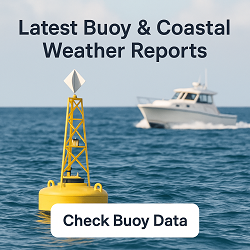Clements, MD Weather Forecast and Current Conditions
Current Conditions From Nearby Local Station
Feels Like 48°F
at
Point Forecast at a Glance







7-Day Temperature Trend
Week Ahead Summary
Variable high temperatures through the week, ranging from 50°F to 66°F. Some rain possible with at least 3 days showing precipitation chances of 20% or higher.
Climate Context
Temperatures are expected to be near normal for this time of year, with highs around 58°F and lows around 40°F.
This Date in Weather History
1986 - An early season cold wave set more than 200 records from the northwestern U.S. to the east coast over a seven day period. For some places it proved to be the coldest weather of the winter season.
Clements, MD 7 Day Weather Forecast Details
Friday Nov 14

Night: Mostly cloudy, with a low around 42. Light and variable wind.
Saturday Nov 15

Day: Partly sunny, with a high near 66. Calm wind becoming south 5 to 8 mph in the afternoon.

Night: A slight chance of rain after 1am. Mostly cloudy, with a low around 56. Southwest wind around 10 mph, with gusts as high as 21 mph. Chance of precipitation is 20%.
Sunday Nov 16

Day: Sunny, with a high near 65. Northwest wind 10 to 18 mph, with gusts as high as 25 mph.

Night: Mostly clear, with a low around 37. West wind 8 to 10 mph, with gusts as high as 20 mph.
Monday Nov 17

Day: Sunny, with a high near 53.

Night: Mostly clear, with a low around 34.
Tuesday Nov 18

Day: A chance of rain after 1pm. Partly sunny, with a high near 50. Chance of precipitation is 30%.

Night: A chance of rain before 1am. Mostly cloudy, with a low around 38. Chance of precipitation is 40%.
Wednesday Nov 19

Day: Partly sunny, with a high near 52.

Night: Mostly cloudy, with a low around 37.
Thursday Nov 20

Day: Partly sunny, with a high near 56.

Night: A chance of rain. Mostly cloudy, with a low around 44. Chance of precipitation is 30%.
Friday Nov 21

Day: Partly sunny, with a high near 60.
About Clements, MD
Content from Wikipedia, licensed under CC BY-SA 3.0.
How We Provide Better Local Weather
Current conditions: We use the nearest available station to your location - including professional MESONET/MADIS and local weather stations - often miles closer than regional airports.
Forecasts: National Weather Service point forecasts predict for your specific area, not broad regional zones, making them far more relevant to your location.



